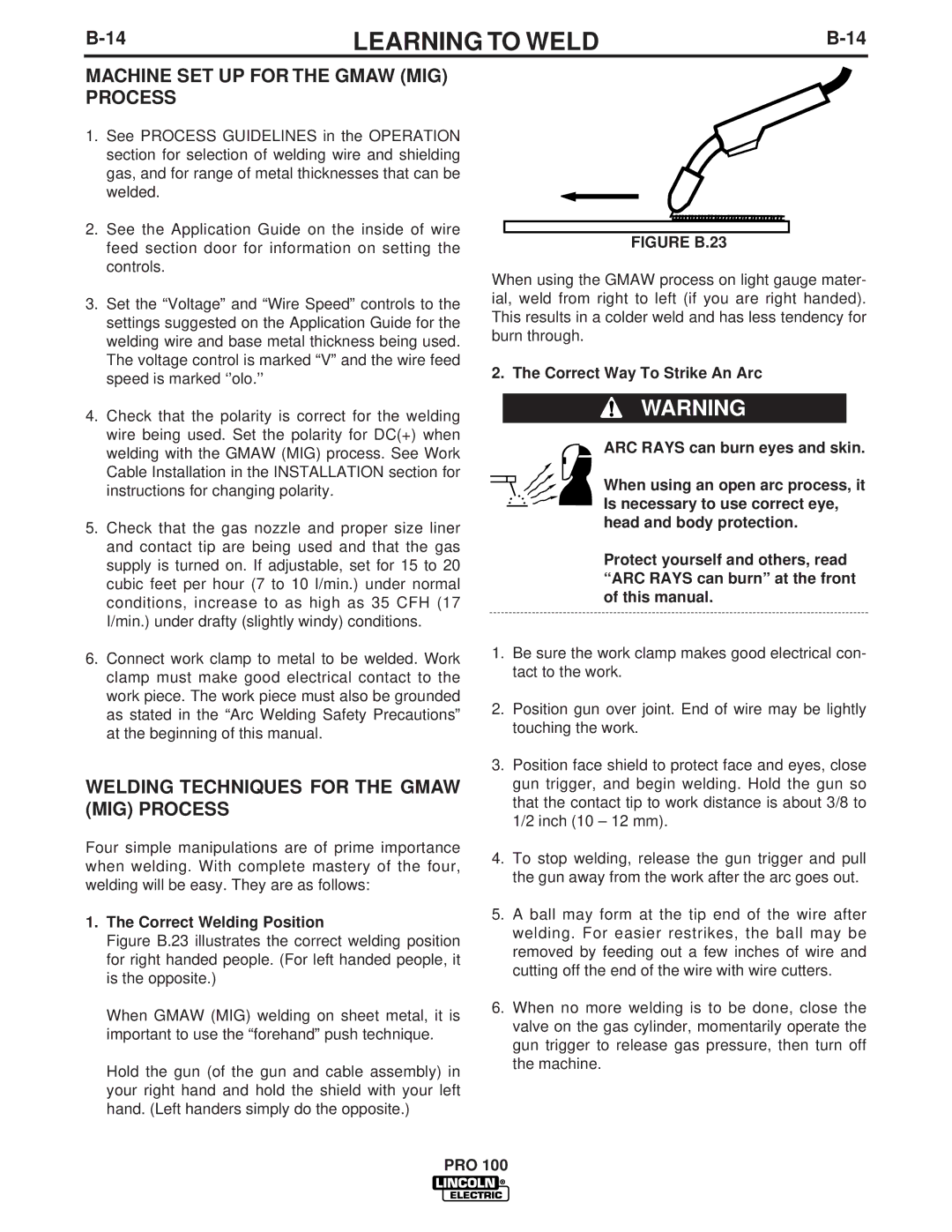PRO 100 specifications
The Lincoln Electric PRO 100 is a compact and versatile multi-process welder designed to meet the needs of both novice and experienced welders. Known for its robust build quality and advanced features, the PRO 100 is engineered for tasks ranging from light fabrication to heavy-duty welding projects.One of the standout features of the PRO 100 is its multi-process capability. It can seamlessly switch between MIG, Stick, and TIG welding, allowing users to tackle various materials including aluminum, stainless steel, and mild steel with ease. This versatility makes it an essential tool for welding professionals and hobbyists alike, enhancing productivity and efficiency on the job.
The machine is equipped with Lincoln Electric's unique Auto-Set technology, which simplifies the setup process for users. By automatically adjusting the voltage and wire feed speed based on the selected material and thickness, it enables welders to achieve optimal results without extensive experience or technical knowledge. This feature not only saves time but also reduces the likelihood of mistakes, making it ideal for beginners.
Powering the PRO 100 is a reliable inverter-based technology that ensures smooth and consistent arcs. This technology not only enhances performance but also improves energy efficiency, making the machine more cost-effective in the long run. The compact design allows for portability, making it convenient for job sites where space may be limited.
The PRO 100 also boasts several safety features that protect both the user and the machine. It includes an overload protection system that prevents overheating, ensuring the longevity of the welder. Additionally, the welder features a rugged construction that can withstand demanding work environments, further enhancing its durability.
Furthermore, the PRO 100 is designed for user comfort and control. The intuitive interface and large color display provide clear readability of settings and parameters, allowing for quick adjustments. The adjustable wire feed speed and voltage settings give welders the flexibility to customize their welding experience.
In summary, the Lincoln Electric PRO 100 stands out in the crowd of welding machines for its multi-process capabilities, Auto-Set technology, and inverter-based power system. Its combination of portability, durability, and user-friendly features makes it an excellent choice for a wide range of welding applications, whether at home, in the workshop, or on the field. This well-rounded welder can help elevate the quality of the work for both the novice and the seasoned professional.

